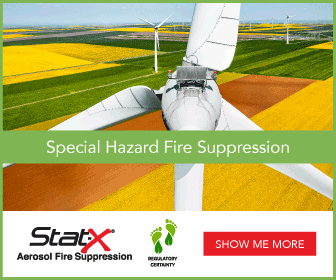NYSERDA Announces $5 Million Available for Assessment of Wind Resources to Support Responsible and Cost-Effective Offshore Wind Energy Development
The New York State Energy Research and Development Authority (NYSERDA) is making up to $5 million available to support meteorological and oceanographic (metocean) data collection off the New York coast in areas with the potential for future offshore wind development.
Alicia Barton, President and CEO, NYSERDA said, "Access to better meteorological and oceanographic data will enable New York to meet its ambitious offshore wind energy goals while protecting New York's coastal resources and marine environment. Deploying this metocean data collection technology builds on the more than 20 robust studies the state completed over the past two years in support of the New York Offshore Wind Master Plan and reinforces Governor Cuomo's steadfast commitment to safeguarding our natural resources for generations to come."
NYSERDA is issuing a request for proposals (RFP) to collect more detailed metocean information about the wind resources off New York to help advance offshore wind development and secure reliable and bankable wind resource data for wind farm developers to reduce uncertainty about site conditions. High-quality metocean and other data will also be made available to the public on an ongoing basis to encourage broad usage and to inform further studies to better understand the offshore study area's wind energy resources and ecosystem.
To jumpstart the development of offshore wind resources for New York, Governor Andrew M. Cuomo announced in his 2018 State of the State address that in 2018 and 2019, the state will issue two solicitations to secure a combined total of at least 800 megawatts of offshore wind power. These solicitations represent a first step toward achieving the Governor's goal of 2,400 megawatts of offshore wind by 2030.
This project will deploy two buoys equipped with Light Detection and Ranging (LiDAR) system(s), remote sensing equipment that uses pulsed laser light to determine wind speeds at altitude. Each of the buoys will be deployed for approximately two years to measure wind speed and direction at turbine hub-height, wave and current measurements, as well as other environmental data.
Better metocean characterization of the wind, wave, and ocean currents will also help increase certainty of development conditions which is valuable information for planning project layout, turbine siting and engineering. More efficient design of offshore wind sites will help maximize renewable energy output, delivering more clean energy to the electric grid in a smaller physical and environmental footprint.
NYSERDA will also require successful proposers to coordinate with regional environmental scientists to collect information that could be useful in understanding more about ecosystem function, timing and relative density of wildlife in the area, or ambient underwater noise. This data will inform future environmental impact assessment studies for offshore wind and can be supported by the next generation of floating LiDAR buoys which are being designed to incorporate additional environmental sensors such as hydrophones to detect marine mammals, or bird and bat acoustic detectors. Similarly, the buoy anchors lines could be equipped with instrumentation to collect data on ocean currents, temperature or chlorophyll concentrations at different depths.
New York State Department of Environmental Conservation (DEC) Commissioner Basil Seggos said, "Responsibly sited renewable energy developments are a critical part of the state's comprehensive efforts to tackle climate change. Through creation of the draft Ocean Action Plan, DEC and partners have continued to work with stakeholders to identify sensitive offshore habitats that potential energy developments should avoid. We are working with NYSERDA, Department of State, the commercial fishing industry, and other partners as this process advances to ensure potential energy developments do not degrade our economically important marine ecosystem."
Funding will be divided as part of a competitive solicitation; one area of focus is permitting, hardware, deployment, maintenance and decommissioning and the other area focuses on data analysis, data storage and data presentation.
The federal Bureau of Ocean Energy Management (BOEM) recently initiated the area identification process by issuing a Call for Information and Nominations for identifying and leasing additional wind energy areas in the New York Bight. This region represents an area of shallow waters between Long Island (to the north and east) and the New Jersey coast (to the south and west). In addition to nominations, BOEM is seeking public input on the potential for wind energy development in the Call Area. A map of the Call Areas can be obtained via BOEM's website at: https://www.boem.gov/NY-Bight/.
NYSERDA | www.nyserda.ny.gov










.jpg?r=8042)

